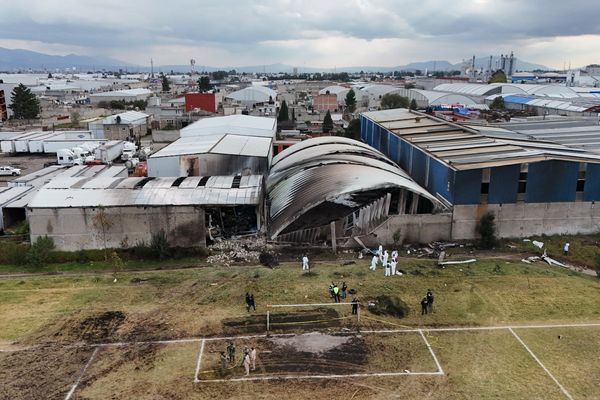
Covid-19 infections in the greater Sydney area are approaching levels not seen since December 2022 as the JN.1 variant continues to drive cases throughout Australia, but hospital presentations and admissions have reduced since late 2023.
The latest New South Wales Covid surveillance data published on Thursday shows that in the fortnight ending 6 January, community transmission of the virus was at a higher level than during the 2023 winter peak. The highest number of notifications in NSW came from western Sydney, with 1,441 cases detected in the fortnight, followed by south-western Sydney at 1,003 cases.
In total, the NSW health department was alerted to 6,743 new cases over the two-week period, though this is an underestimate given not everyone with symptoms gets tested or gets PCR tested.
Emergency department presentations remained high at about 1,150 in the first week of the year, with about 300 of those patients being admitted to hospital.
But hospital numbers have fallen since the end of 2023. About 1,400 people presented to emergency in the week to 31 December, with about 400 of those requiring hospital admission.
NSW Health said the high number of hospital presentations should be “interpreted cautiously given the likely impact of the holiday period on healthcare seeking behaviour and the availability of community-based healthcare services”.
The NSW chief health officer, Dr Kerry Chant, said there was also no evidence that the two strains driving cases, EG.5 and JN.1, cause more severe disease. But the overall increase in cases puts more people, especially vulnerable people, at risk, she said.
“If you are experiencing cold or flu symptoms, please stay at home. If you are experiencing symptoms and you do need to go out, please wear a mask,” she said.
In Queensland, the chief health officer, Dr John Gerrard, said the unseasonal surge in respiratory infections had continued across that state in early 2024.
There are still about 300 patients in Queensland hospitals with Covid-19, the equivalent to filling a mid-sized hospital, he said.
“Covid-19 hospitalisations started climbing in mid-October, initially driven by the XBB.1.5 subvariant,” Gerrard said.
“Since early December, the JN.1 subvariant has emerged and is now becoming dominant in Queensland. While previous Covid-19 waves have peaked at about six weeks, the current wave remains strong after 12 weeks. The coexistence of two subvariants appears to have caused prolonged and overlapping waves in Queensland.”
In Victoria, the number of people in hospital with Covid increased in the week to 5 January with a daily average of 377 people, compared with 307 the week prior.
The current average in Victoria is the highest in recent months, but remains below the peak in May and June 2023, and deaths have decreased.
On Tuesday the federal health minister, Mark Butler, said the cases throughout Australia were “not surprising really, given the degree to which people come together over the Christmas and New Year period to celebrate the festive season”.
“But the impact on the hospital system, the impact on fatalities is significantly lower, for example, than the same time last year,” he said.







